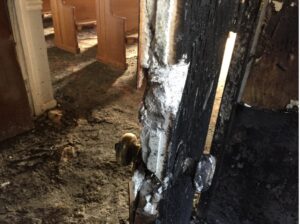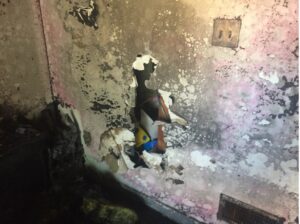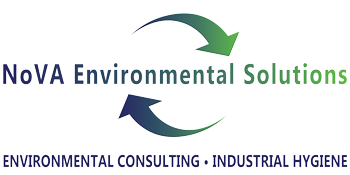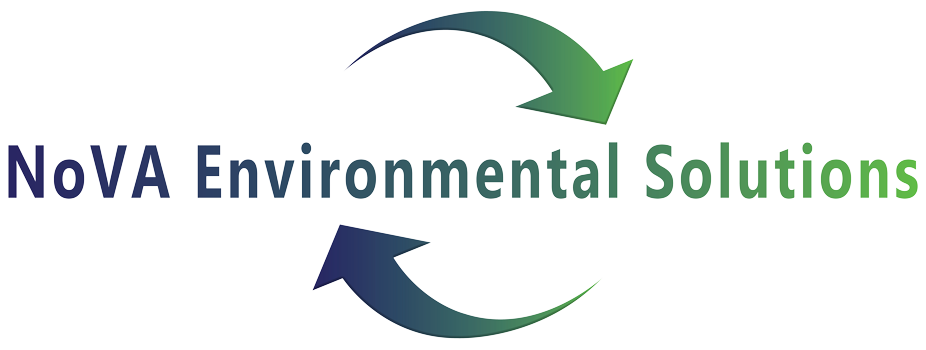What are Combustion By-Products (CBPs)?
Combustion by-products are the gases, airborne solid, and liquid particulates that are released when a material undergoes partial combustion. Combustion by-products typically include particulates such as soot, char, ash, metal oxides, and inorganic solids. These solid particulates can settle following a fire event and can result in health hazards and lingering odors.5,6
 The residues of the fire, or combustion by-products, are gases and small particles that are emitted through the incomplete burning of fuels such as oil, gas, kerosene, wood, coal, and propane. The particulate matter components will include drops of condensed soot, char, ash, metal oxides and inorganic solids. These materials can be acutely hazardous to humans since they can contain heavy metals, polycyclic aromatic hydrocarbons (PAHs), a cancer-causing substance. The microscopic particles such as soot can easily penetrate deep into the lungs and have been linked to a wide range of serious health effects, including premature death, heart attacks, strokes, upper respiratory system irritation, as well as acute bronchitis and aggravated asthma among children1,2,3, 5.
The residues of the fire, or combustion by-products, are gases and small particles that are emitted through the incomplete burning of fuels such as oil, gas, kerosene, wood, coal, and propane. The particulate matter components will include drops of condensed soot, char, ash, metal oxides and inorganic solids. These materials can be acutely hazardous to humans since they can contain heavy metals, polycyclic aromatic hydrocarbons (PAHs), a cancer-causing substance. The microscopic particles such as soot can easily penetrate deep into the lungs and have been linked to a wide range of serious health effects, including premature death, heart attacks, strokes, upper respiratory system irritation, as well as acute bronchitis and aggravated asthma among children1,2,3, 5.
 The following are typical solid particles that are present following a fire event4:
The following are typical solid particles that are present following a fire event4:
- Char – Particles that are larger than 1 micron and retain the characteristics of the burned material.
- Ash – The residue left after complete combustion has occurred.
- Soot – Fine black particles (mainly carbon) plus residual gas particles resulting from incomplete combustion. These particles typically result from house fires and may be acidic/damaging to metal materials.
Most of these combustion by-product particles are invisible to the naked eye, so testing can be beneficial to determine which materials have been impacted by smoke residue and if remediation/cleaning was effective.
When is testing for Combustion By-Products necessary?
Following a fire/smoke event, there are several situations where Combustion By-Product Testing can be very beneficial to a property owner/occupant:
Insurance adjusters are commonly using visual assessments as a way to determine the extent and severity of fire and smoke damage. If an insurance adjuster states that no professional remediation is necessary, and the property owner believes that standard cleaning will not be sufficient, then testing should be conducted. Most smoke and combustion by-products are not visible, so testing should be incorporated into determining the extent of the damage. An insurance adjuster can confirm that there is sufficient damage and smoke residue to warrant professional remediation but cannot state that a home is safe for occupancy. 
In some cases, it is necessary to have combustion by-product testing conducted to determine the specific compounds that are present following fire/smoke damage. Many people have medical conditions that make them susceptible to exposure to specific smoke particulates. Testing can provide data that will help in choosing cleaning techniques that can benefit in cleaning these compounds.
Combustion by-product testing should be conducted after any remediation following smoke/fire damage to ensure that the home has been restored to pre-loss condition and that damaged areas have been adequately cleaned. Although there is no current standard for fire damage (IICRC S700 is not yet completed), certified industrial hygienists and indoor air quality professionals will compare historical standards in reporting to determine if remediation was adequate in cleaning the damaged areas.4
What is involved in Combustion By-Product Testing?
Following an interview and walk-through with the Client, the following steps are typically involved in combustion by-product testing:
- Visual assessment to determine which areas were likely impacted
- Soot, char, and ash dust wiping
- Tape lift sampling – Helpful for providing the density of particulates on surfaces
- Bulk air sampling
- Micro-vacuum air sampling – Used for determining contamination of soft goods
- Additional sampling for more specific analysis such as TO-15 Methods and Analysis
What are the benefits of having a Combustion By-Product Testing Report?
After conducting sampling and reviewing the results provided by a certified laboratory that is independent from the certified industrial hygienist or indoor air quality professional, a report is written up that provides details regarding the extent of the fire/smoke damage. The results included in the report are quantified and will be compared to historical standards for determining which materials are considered “affected”. If a sample contains greater than 2-5% of soot, char, or ash, it is recognized as an “affected” material.4
This report will help the Client and remediation professionals in the following ways:
- Help with achieving proper restoration of the home/living space by providing a more accurate representation of the materials that were affected.
- Allow the property owner to have informed conversations with the insurance adjuster and remediation professionals to achieve better results.
- Help remediation professionals determine the proper personal protective equipment (PPE) necessary for keeping workers safe during remediation.
- Providing knowledge of what contaminants are present due to varying degrees of sensitivity in occupants.
References:
- AIHA, “Technical Guide for Wildfire Impact Assessments for the OEHS Professional”, 2018
- Barry Delinger et al., “Combustion Byproducts and Their Health Effects: Summary of the 10th International Congress”, Environmental engineering Science, Vol. 25, No. 8, pg. 1107-1114, 2008
- USEPA, EPA-453-93-036 “A Summary of the Emissions Characterization and Noncancer Respiratory Effects of Wood Smoke”, 1993
- 2020_11_4_Smoke, Ash and Soot: A Partial Damage/Insurance Claims webinar for 2020 wildfire survivors https://www.youtube.com/watch?v=3lO24iKonJA
- Eurofins CEI https://www.eurofinsus.com/environment-testing/built-environment/locations/eurofins-cei/ – Combustion-by-products Analysis webinar February 2021
- Eurofins EMLab Combustion By-Product (emlab.com)






